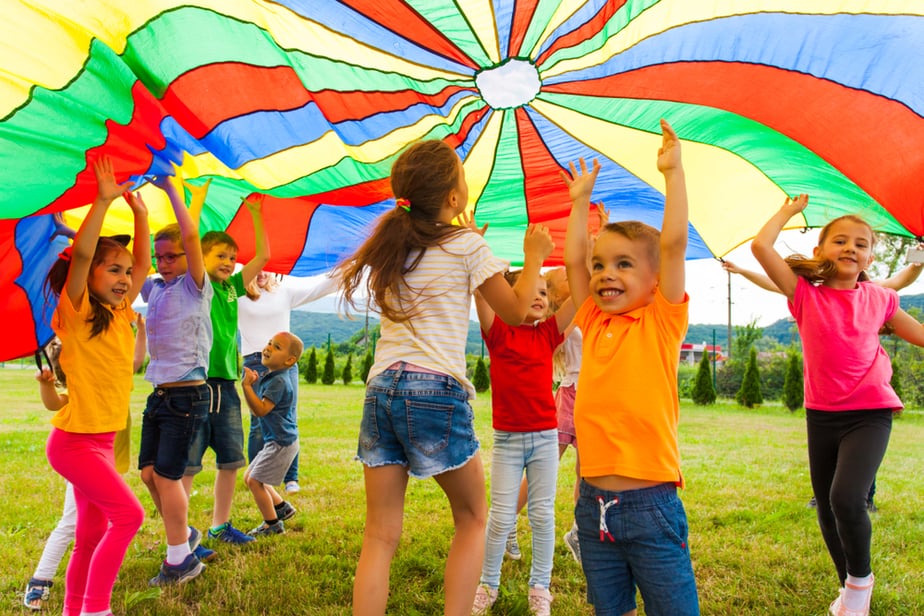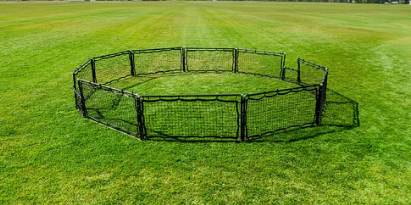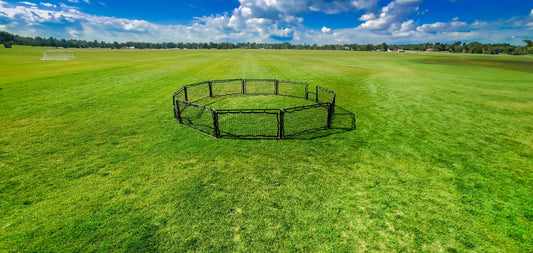Why Should PE Teachers Use Games in Class?
Utilizing games in PE classes can shift students' perception of physical education from a dreaded obligation to an exciting adventure. The traditional focus on high-intensity exercises like mile runs often leads to avoidance and disengagement among students. Chester College emphasizes the importance of physical education in fostering lifelong healthy habits, teamwork, and stress relief. By incorporating engaging, medium-intensity games, students can experience the joy and benefits of physical activity without the pressure of traditional exercises. This approach not only increases their enthusiasm for PE classes but also encourages outdoor play, significantly contributing to their physical and mental well-being. Games ensure that exercise feels like play, making students eager for PE classes and more likely to embrace an active lifestyle outside school. This method transforms PE into a positive, impactful experience, aligning with educational goals and promoting overall health and happiness.
What Makes PE Games Fun?
Creating an enjoyable PE game hinges on variety, inclusion, and the social aspect of playing with friends. By rotating sports and activities, PE teachers cater to diverse interests, ensuring that every student finds something they love. This method keeps engagement high and introduces students to a wide range of physical skills and sportsmanship values. Equally important is allowing students to participate with their friends, fostering a supportive and inclusive environment. This approach not only makes PE classes more enjoyable but also helps in building positive relationships and teamwork skills.
Incorporating games that require both physical and mental engagement encourages students to see physical activity in a new light, promoting consistent exercise habits and a positive body image. Fun, team-building exercises and the option for free play—where children choose their activities—reinforce the joy of movement. By ensuring that PE classes are a space where every student feels welcomed and engaged, teachers can instill a lifelong appreciation for physical activity and healthy living.
The following with be a list of teaching resources that you are more then welcome to use in order to make the next best PE class for your students.
Best PE Games for Elementary School
Elementary school is an important stepping stone for kids. Many kids begin developing motor skills during their middle school years. Kindergarteners are just learning how to balance on one leg for longer than 10 seconds, and older elementary school students are only just beginning to build up enough endurance to run across a field at a consistent pace. PE teachers can take an important stance in teaching their gym class important motor skills during the PE lesson. Here are five fun ideas that will get elementary students up and moving during gym class.
- Freeze Tag
One of the best games to teach elementary-age kids is freeze tag. It’s a simple twist on the classic game of tag with only a few additional rules. To play, choose one child to be the tagger (two for larger groups). Everyone else playing will run from the tagger. If they are tagged, they have to freeze exactly how they were when they were tagged. In some variations, other teammates can unfreeze players by tagging them.
Freeze tag can be played as an indoor game or an outdoor game. It encourages students to run around without feeling like they’re being forced to exercise. It will also make the students laugh when they’re frozen in funny positions. Class clowns and extroverted children will thrive during freeze tag because they can purposefully freeze themselves into funny positions that will make the other children giggle. Introverted children will also love this game because they can freeze in a normal position, ensuring they don’t stand out or feel put on the spot.
Best of all, freeze tag needs no equipment. To play, you only need players. Find a place where the kids can run around safely (either inside a gym or outside on the grass), and let them run around. Once the game starts, the kids will need very little instructions to keep the game going.
- Musical Chairs
One of the most celebrated games among young children is musical chairs. Musical chairs is a fun game for young kids, though older kids love playing as well. It’s often seen as a party game but is perfect for PE classes. To play musical chairs, set up a circle of chairs, with the seat facing outwards. You will need a chair for every student, minus one. Line up the students in a circle around the chairs and start playing appropriate music. If you’re playing the game a new season or holiday, play music associated with that holiday to get the kids more involved.
When the music is playing, instruct the kids to dance their way around the circle. As soon as the music stops, the kids need to find a seat as quickly as possible. However, because there’s one less chair than students, one student won’t get a seat. The student who doesn’t get a chair is out of the game. Another chair is removed from the circle to make sure that there is always one more student than chairs. The round starts again, picking up the song where you left off.
Musical chairs isn’t physically demanding and is a perfect game to play if the outside weather is gloomy. It is the perfect way to introduce young children to exercise without overwhelming them with strenuous physical activity. Most importantly, musical chairs is a fun game that is sure to get all of the children laughing and smiling during PE class.

- Shark Zone
Shark Zone is a fun game that combines an obstacle course with the classic game of “The Floor is Lava.” To play Shark Zone, you will need blue mats covering the gymnasium floor. It’s best to use blue mats for the game because it helps young children get the best visualization for the game that they will be playing. The kids will see the blue mats and immediately associate the blue with water, helping their imagination run wild. On the blue mats, set up connecting balance beams, bean bags, towels, and other materials, leading to the other side of the mats. The blue mats are shark-infested waters, and the material on the mats is the only way across, floating in water teeming with sharks.
The game's goal is to get from one side to the other without touching the blue mats. Let the kids have fun running back and forth across the mats to get used to the idea. Once they’re used to it, separate the class into teams that will need to work together to get across the mats. This encourages the kids to learn teamwork and how to work together towards a common goal. The students will have to practice balance on a single bean bag while three or four people are scrambling to get to the next stage without sliding off the bean bag.
Shark Zone is a great game for teaching balance, agility, and teamwork. It also encourages imagination and promotes problem-solving skills. Shark Zone is a great game that will tire out young children without forcing them to run back and forth across the gym. By the end of the class, the kids will be tired but won’t realize that they had participated in strenuous physical activity.
- Red Light, Green Light
Sometimes, running back and forth across the gym can be a fun activity. The game Red Light, Green Light is a great example of when kids love running back and forth across the gym. To play Red Light, Green Light, line up all of the students on one side of the gym. From the opposite side of the gym, the gym teacher will yell out three instructions: red light, green light, or yellow light. When the teacher yells, “Green light,” all of the students will run as fast as they can towards the teacher. If the teacher yells, “Red light,” all of the students have to come to an abrupt stop. Any student who is still moving forward during a red light has to start over. If the teacher yells, “Yellow light,” the students can walk, but they have to start over if they start running.
This game encourages young kids to learn listening skills, helping them to focus better later in life. Red Light, Green Light is a great game for endurance, concentration, and balance. It can be played indoors or outdoors, depending on the weather in the area. If playing outside, take the students to a grassy area just in case one of the students trips and falls. Red Light, Green Light is a fun way to get the kids running back and forth across the gym.

- Parachute Games
A parachute is a large circular fabric with handles along the edges. Typically, it is sectioned with colored designs. Kids love playing with it because it piques their imagination. Here are some of the best parachute games for elementary kids.
- Popcorn. Place a bunch of small plastic balls, beanbags, or cotton balls on the parachute. Have the kids lift up the parachute by the handles and wiggle it up and down. The items on top will bounce up and down like popcorn.
- Make Waves. With the kids holding onto all the handles of the parachute, try to imagine different waves. Try to mimic calm sea waves and then tell the kids that there’s a storm slowly rolling in and rapidly shake the parachute.
- Merry-Go-Round. While holding onto the parachute handle with one hand, have the kids run in a circle. Switch directions and hold the parachute with the other hand.
- Mushroom. Hold the parachute at waist height. All at the same time, quickly raise the parachute over their heads and then have all the children quickly drop to their knees, pulling the parachute handles down with them. This creates a mushroom-like shape with the parachute at the ait catches in the center.
- Rollerball. This activity focuses on teamwork. Place a ball on the parachute and have the kids lift and lower their edges to keep the ball from falling off the edge of the parachute.
- Under the Parachute. Assign all the children a color or number (make sure that only three children have the same number or color). Then, have everyone lift up the parachute over their heads and call out one of the colors or numbers. All of the kids with that color or number will run under the parachute while it’s raised in the air and swap places.
Playing with a parachute helps the kids to use their imaginations and learn more about the importance of teamwork. It also exercises their arms from having to lift the parachute up and down to follow the teacher's directions.

Best PE Games for Middle School
Middle school students are always looking to fit in. They are also often sensitive to feeling out-of-place. PE teachers must take the time to understand their class and ensure that each kid feels included and loved. Students with poor middle school experiences may go on to associate all school activities with negative emotions. Physical Educator can help middle school students escape the social expectations of middle school by playing fun PE games that don’t put a focus on the individual and, instead, focus on teams. Here are the three best games for middle schoolers.
- Nine Square
One of the best games for gym class in middle school is Nine Square. Nine Square is quickly becoming popular in schools because of its easy setup and simple rules. The game is similar to four square, but with a unique twist that makes the game perfect for both younger and older kids. The court of the game is a three by three frame that is raised above the ground. The players stand below their square, with the center square acting as the Queen or King square. To play, the players hit a ball out of their square and into another’s, without letting the ball touch the ground.
Nine Square is a combination of four square and volleyball, creating a fun way to teach the middle schoolers new skills. Additionally, it doesn’t put any players on the spot because nine people are in the game at the same time. If multiple courts are set up, no one will feel left out, making it the perfect game for middle schoolers.

- Fitness Bingo
Fitness Bingo is a fun way to work the kids through a circuit of exercises. Everyone will receive a bingo card with fitness activities. The bingo card will say things like “10 jumping jacks” or “one lap around the gym.” When the students complete one of the activities, they can cross that box off their card. The first person to get a bingo card will win a prize, and the first person to cross off all the boxes in their square will also get a prize.
Playing fitness bingo gets all of the students moving, running, and jumping, without feeling like they’re being forced through a circuit. Additionally, because the activity feels like a game, students can stay with their friend groups and work together on their bingo cards. Fitness bingo is a great way to get all of the students involved in gym class.
- Frisbee
Teaching the kids new skills is another great way to fill your PE class schedule. Frisbee is a fun skill that the kids can pick up easily. At the end of the frisbee unit, you can even teach the kids how to play games that involve frisbees, such as ultimate frisbee or frisbee golf.
Frisbee should be played outside in an area where the kids have plenty of room. Take the kids out to the school track and practice throwing the frisbee on the turf. Because many of the kids won’t have experience throwing frisbees, make sure to give in-depth tutorials on how to throw so that none of the kids feel like they’re stuck in the spotlight. However, if some kids are proficient throwers, have them walk around and give the other students tips, giving them a chance to pick up a teaching role among their peers.

Best PE Games for High School
High school students are sensitive and seek the approval of their friends. They are usually very susceptible to peer pressure and will do almost anything to feel accepted in their friend group. Additionally, they might be less inclined to get sweaty during PE class because they don’t want to ruin their appearance. PE teachers should be careful when interacting with high school students and make sure that the students don’t get embarrassed or frustrated. Here are the three best activities that will help the students have fun and exercise.
- Yoga
Yoga is the best way to get high school students participating in an activity. For a successful yoga class, you will need a yoga mat for each student. Spread out the yoga mats six feet apart to give the students plenty of room to stretch and work out. Although yoga seems like it is an easier exercise, the students will quickly find that yoga strengthens their bodies just as quickly as other exercises.
Yoga is a great exercise for high school students because it can help students relax and calm down after a long and busy day of classes. Yoga has been shown to release stress and promote happy endorphins in the body.

- Hunger Games Tag
Hunger Games tag incorporates popular culture into the PE class, making it more likely that the students will enjoy participating in the game. Hunger Games tag is just like tag, except you can’t tag someone with your hands. Instead, the gym will be littered with items, such as pool noodle, hacky sack, and other soft materials, that the students will use to tag the other students. The last person standing wins.
This version of tag is more likely to get the students engaged, even though most of them would consider tag to be a game for younger kids. By adding the Hunger Games twist on this fun PE game, the students will still have fun running around the gym.
- Capture the Flag
Capture the Flag is always a fun game for students of all ages. It is a good blend of strategizing and a tag game to offer diverse and complex play for the students. To play, split the class into two teams on a playing field. On each side, place the team’s flag and a squared-off section that will act as each team’s “jail.” Each player should wear a flag around their waist that can be easily grabbed without dislodging any of the players’ clothes. When the game starts, players will adopt one of two positions; they will either be a defensive player and protect their own flag by staying on their own side of the field, or they will be offensive and try to steal the opposite team’s flag. If a player is tagged on the opposite team’s side, they go to the “jail” until one of their own players crosses and tags them out of jail.
This is a fun game because it requires that the students work together to win the game. When the players are able to steal the flag from the other team’s side and bring it back, that side wins the game.








